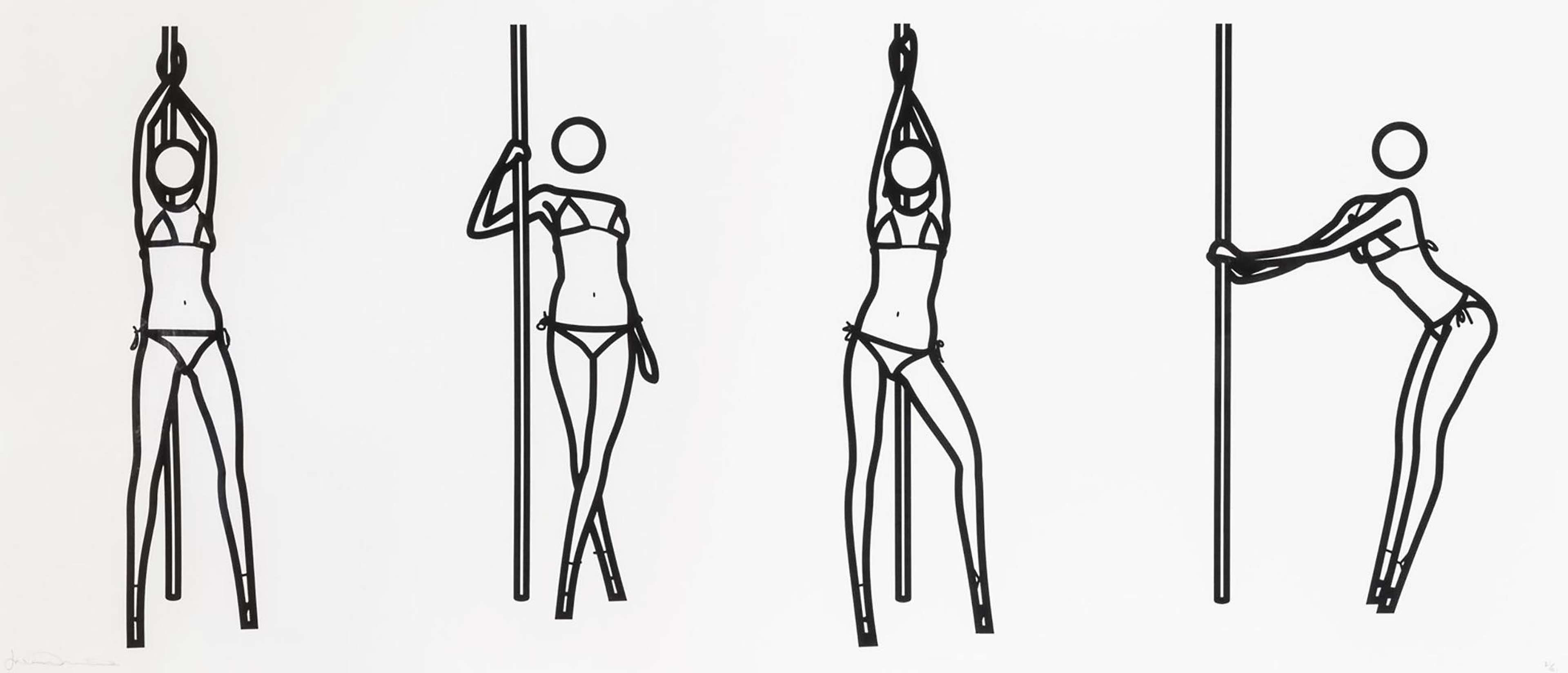This Is Shahnoza 2

This Is Shahnoza 2
Signed Print
Julian Opie
Price data unavailable
There aren't enough data points on this work for a comprehensive result. Please speak to a specialist by making an enquiry.
57 x 136cm, Edition of 40, Screenprint
Auction Results

Track auction value trend
Meaning & Analysis
Featuring a pole dancing figure in a sequence of static poses, This Is Shahnoza 2 is a print from Julian Opie’s This Is Shahnoza series from 2006. Depicted in Opie’s trademark bold and linear style, the figure is rendered without facial features, with only a blank circle as a head. In his use of simplified line and clearly delineated shapes, Opie portrays this figure as an anonymised archetype of male desire.
Through a sequence of static poses that show the dancing figure moving around the pole, Opie creates a sense of movement within the image in a way that reflects movement in films. Opie orientates the figure’s head and body towards the viewer in order to suggest her awareness of being watched and makes clear that this sequence of movements is conforming to a particular performance tradition.
Rather than depicting someone to be recognised, the figure in This Is Shahnoza 2 is reduced to a ‘type’, presenting the viewer with a response to iconography found in the cultural mainstream that reflects the stereotypically ‘sexy’ woman. At the same time, Opie depicts the figure as always facing the viewer, and so by self-consciously subjecting herself to being looked at, she maintains her sovereignty over the desiring gaze and disrupts the expectations of the viewer.